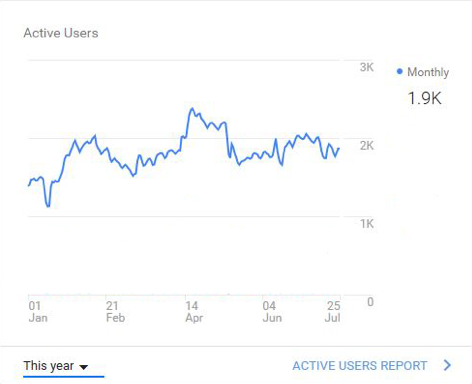Editorial
Take a Fresh Look at Connected Science Learning
Connected Science Learning October-December 2018 (Volume 1, Issue 8)
By Dennis Schatz
Editor Dennis Schatz welcomes you to the latest issue of Connected Science Learning, focused on STEM Learning Through Afterschool Experiences, and introduces the journal’s incoming Field Editor, Beth Murphy.
More than 10% percent increase in subscribers; More than 30% increase in active users
I am delighted to report that during the first six months of this year, Connected Science Learning saw a more than 10% increase in subscribers—from 3,500 to 3,914. In addition, the number of active users (number of unique visitors per month) increased from approximately 1,400 to 1,900, according to Google Analytics.
We recently completed a business and marketing plan funded by the Kavli Foundation, so expect these numbers to continue to increase as we implement the recommendations. Help us break the 4K subscriber mark by spreading the word about CSL through your professional and social networks!
Afterschool plays a key role in connecting youth with STEM experiences
The Afterschool Alliance’s report, Full STEM Ahead: Afterschool Programs Step Up as Key Partners in STEM Education, makes it clear that much STEM learning currently occurs in afterschool programs, which are especially beneficial for low-income families:
"A majority of children in afterschool programs are offered STEM learning opportunities. Seven in 10 parents (69%) report that their child is offered STEM learning opportunities in their afterschool program, which equates to approximately seven million children who have access to afterschool STEM."
"Parents of children from low-income families express higher support for afterschool STEM programs than more affluent parents. Low-income families place a higher emphasis on STEM when selecting their child’s afterschool program."
The report also notes the important role that afterschool programs play in advancing STEM learning:
"Afterschool programs provide an ideal environment to engage in hands-on design, building, coding, and programming by providing a venue where students can apply science and math principles to design and implement solutions to real-world problems."
"A majority of parents believe that children can benefit from afterschool programs by gaining interest and skills related to science, technology, engineering, or mathematics. A majority of parents also believe that afterschool programs should offer opportunities for children to explore and engage in hands-on STEM learning."
This issue of Connected Science Learning (released from October through December 2018) highlights programs that demonstrate how afterschool experiences can engage youth in STEM learning experiences and make connections to science-based professionals.
Connected Science Learning’s new Field Editor
It has been my honor to be the inaugural Field Editor for the first nine issues of Connected Science Learning. Since being voted NSTA President-Elect earlier this year, I knew I would need to relinquish the Field Editor role by the time I become President in June 2019.
I am happy to announce that Beth Murphy has been chosen as the new Field Editor after a nationwide search and interviews with a number of highly qualified candidates.
Beth was at the Bakken Museum in Minneapolis for 17 years before recently starting her own consulting business, where she works to support science and STEM education with a wide variety of organizations—such as Minnesota Independent School Forum, Anoka-Hennepin and Minneapolis public school districts, STARBASE Minnesota (as project director for STEM Pathways, featured in the first issue of Connected Science Learning), and World Savvy. She also serves on the board of directors for the nonprofits Science from Scientists and SciMathMN.
While at the Bakken Museum, Beth played a major role in school, family, and volunteer programs with an emphasis on program management, grant writing, and program evaluation. Highlights of her time at The Bakken include leading the museum’s longstanding partnership with the Minneapolis Public Schools, which involved teacher professional development, a districtwide outreach program for schools, and a leadership development opportunity for classroom teachers. She also designed and directed the Bakken Teacher Academy, a yearlong graduate course that most recently focused on reading in science for middle and high school teachers.
As you can see, she has experience working in a wide variety of STEM learning settings, both in school and out of school. In addition, she has a PhD in physics and has been a professor teaching physics and science education at several colleges in Minnesota and Wisconsin.
Beth’s transition to full responsibility for the field editorship will occur between now and January, with her being fully in charge for the Encouraging Youth to Pursue STEM Careers issue to come out starting in January.
Dennis Schatz (dschatz@pacsci.org) is the Editor of Connected Science Learning and Senior Advisor at the Pacific Science Center in Seattle, Washington.



